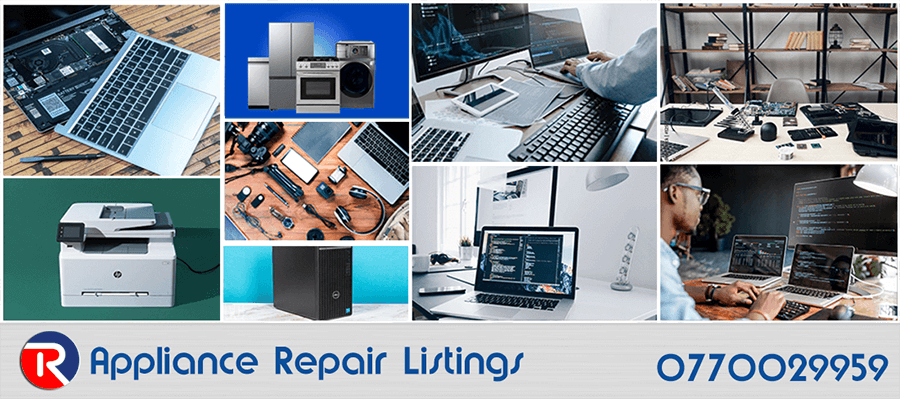
Fixing Laptop Audio Issues: No Sound or Crackling
By Repair.co.ke
Laptop audio issues, such as no sound or crackling noises, can significantly disrupt productivity and entertainment experiences. These problems may arise from hardware malfunctions, software misconfigurations, or outdated drivers. This article provides a comprehensive guide to diagnosing and resolving common laptop audio issues, ensuring clear and consistent sound output.
Understanding Common Audio Issues
Laptop audio problems typically manifest as complete silence or distorted, crackling sounds. No sound may result from muted settings, disconnected hardware, or corrupted drivers, while crackling often indicates interference, outdated software, or hardware wear. Identifying the root cause is essential for effective troubleshooting. The following steps outline a systematic approach to diagnosing and fixing these issues.
Step 1: Check Basic Audio Settings
Begin by verifying the laptop’s audio settings. Ensure the volume is not muted or set too low. On Windows, right-click the speaker icon in the taskbar and select “Open Volume Mixer” to confirm that applications and system sounds are audible. For macOS, check the Sound preferences in System Settings to ensure the output volume is adjusted and the correct output device is selected.
Next, confirm that the audio output is directed to the intended device. Laptops often switch between internal speakers, headphones, or external devices when connected. In Windows, navigate to “Sound Settings” and select the appropriate output device. On macOS, select the correct output in the Sound preferences. If external devices like headphones are connected, unplug them to test the internal speakers.
Step 2: Inspectsince Driver Updates
Outdated or corrupted audio drivers are a frequent cause of audio issues. Drivers facilitate communication between the operating system and audio hardware. To update drivers on Windows, open Device Manager, locate the audio device under “Sound, video, and game controllers,” right-click, and select “Update driver.” Choose “Search automatically for drivers” to download the latest version. On macOS, system updates typically include driver updates, so ensure the operating system is up to date via Software Update in System Settings.
If updating drivers does not resolve the issue, uninstall the audio driver in Device Manager (Windows) and restart the laptop to trigger an automatic reinstall. For persistent issues, visit the laptop manufacturer’s website to download and install the specific audio driver for your model.
Step 3: Test Audio Hardware
If software settings and drivers are correct but the issue persists, test the audio hardware. Connect headphones or external speakers to determine if the problem is with the internal speakers. If external devices produce sound, the internal speakers may be damaged or disconnected. Crackling in both internal and external devices may indicate a faulty audio jack or sound card, requiring professional repair.
To test for hardware issues, play audio from multiple sources, such as a media player and a web browser, to rule out application-specific problems. If crackling occurs, check for electromagnetic interference from nearby devices like routers or mobile phones, which can disrupt audio signals. Relocate the laptop to test if the issue resolves.
Step 4: Adjust Audio Enhancements and Formats
Audio enhancements or incompatible formats can cause crackling or no sound. On Windows, navigate to the audio device properties in Sound settings, select the “Enhancements” tab, and check “Disable all enhancements.” Under the “Advanced” tab, test different audio formats (e.g., 16-bit, 44100 Hz) to find a compatible setting. On macOS, ensure the output format in Audio MIDI Setup matches the laptop’s capabilities, typically 44.1 kHz or 48 kHz.
Step 5: Check for Software Conflicts
Background applications or conflicting software can interfere with audio output. Close unnecessary programs and restart the laptop in Safe Mode (Windows) or Safe Boot (macOS) to test audio with minimal software running. If the issue resolves, identify and uninstall problematic applications or update them to the latest version.
Step 6: Professional Diagnosis and Repair
If the above steps fail, the issue may involve hardware damage, such as a loose internal speaker connection or a failing audio chip. Contact a professional repair service, such as Repair.co.ke, for a thorough diagnosis. Technicians can inspect internal components, test the sound card, and replace faulty parts. For crackling issues, professionals may check for grounding problems or replace damaged audio ports.
Preventive Measures
To avoid future audio issues, keep the operating system and drivers updated, avoid exposing the laptop to extreme temperatures or moisture, and use surge protectors to prevent electrical damage. Regularly clean the laptop to prevent dust buildup, which can affect internal connections.
Resolving laptop audio issues requires a methodical approach, from checking settings and updating drivers to testing hardware and seeking professional help. By following these steps, users can restore clear audio output and prevent recurring problems. For complex issues, Repair.co.ke offers expert diagnostic and repair services to ensure your laptop performs optimally.